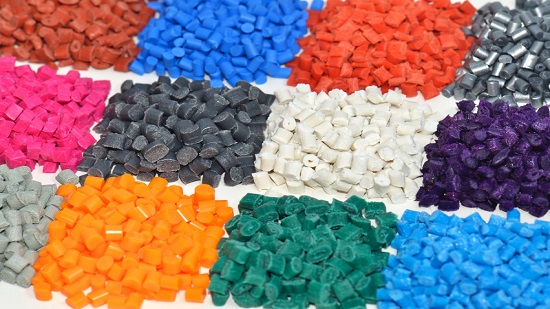Applications of polymeric materials
by Taraz Polymer Iranian
1/22/2022
Applications of polymeric materials
Polymers are used in many industries. Some industries that consume polymers include:
•Packaging Industry
• Home appliance industry
•Automotive Industry
• Health and pharmaceutical industries
•Agriculture industry
•building industry
•Textile Industry
• Electrical and electronics industries
Application of polymeric materials in packaging industry:
The largest consumer of polymers is the packaging industry. These industries mostly use high-consumption plastics. The reason is the cheap price, ease of processing, recyclability and hygiene of these materials. Packaging is generally divided into two main parts: soft and flexible packaging and hard packaging. Packaging is generally divided into two main parts: soft and flexible packaging and hard packaging. Soft and flexible packaging includes all types of films, including lightweight polyethylene, linear lightweight polyethylene, heavyweight polyethylene, polypropylene, PVC and PET. Of course, other films are now being produced in combination with engineering polymers for special purposes.
The use of plastics in the production of nylon bags and their replacement with paper bags is also of great environmental value because it prevents the cutting of trees for paper production.
The production of bags made of polymers such as polyethylene and polypropylene has revolutionized the packaging industry of bulk materials such as cement, gypsum, cereals, flour, bitumen, etc. By replacing paper bags, these bags have led to the development of the packaging industry in this field. Another general category of uses in the packaging industry is hard packaging, which includes a variety of bottles. By replacing glass bottles and metal containers, these bottles have made packaging cheaper and public health has improved. The use of polyethylene terephthalate bottles has led to the development of the mineral water industry, which in addition to raising the level of public welfare has increased health standards. Replacement of glass bottles with PET bottles has also improved the level of hygiene in the carbonated beverage packaging industry. The use of polyethylene bottles in the packaging of chemicals such as acids and chemical toxins and the replacement of these containers with metal containers has also expanded the packaging industry. The packaging of detergents and hygiene and cosmetics in plastic containers has also boosted the detergent and hygiene industries, which in turn has increased the consumption of these materials and thus increased the level of public health. Materials used in this type of packaging mostly include: polyethylene terephthalate, polyethylene, polypropylene, etc.
Application of polymeric materials in home appliance industry:
One of the largest consumer industries of polymeric materials is the home appliance industry. In general, home appliances have become very diverse with modern life and their expansion has been done by relying on advanced polymeric materials as raw materials. Plastic materials have given them many capabilities, both in terms of design and beauty and performance.
Examples of home appliances that plastics have played a significant role in their development include refrigerators, vacuum cleaners, washing machines, dishwashers, irons, juicers, meat grinders, kitchen mixers, microwave ovens, and more.
In addition, high-consumption polymers are gaining ground in these industries. An example of this material is polypropylene, which can replace many parts with design changes.
Application of polymer materials in automotive industries:
Today, most car parts are made of polymeric materials, especially thermoplastics. The use of plastics instead of metal parts has made the production of parts easier and cheaper, and due to the easier processing of plastics compared to metals, has led to various design possibilities. Since the energy required to process plastics is less than that of metals, the use of plastics instead of metals reduces the emission of carbon dioxide into the atmosphere. Plastics are lighter and have a lower density than metals, so the weight of today's cars with the use of plastics has been reduced, and this has saved fuel consumption and less pollution. Other advantages of using plastics in the automotive industry include recyclability, greater occupant comfort, greater safety, beauty and variety of designs. Other advantages of using plastics in the automotive industry include recyclability, greater occupant comfort, greater safety, beauty and variety of designs. Different plastics are used in different parts of the car. Engineering plastics, such as polyamides, are used in automobiles. Polypropylene grades are used in the interior & exterior of the car. Polycarbonate and polymethyl methacrylate are used in car headlights. Other polymers used in automobiles include polyurethane, polystyrene, polybutylene terephthalate.
Application of polymeric materials in health and pharmaceutical industries:
Polyolefins are among the best polymers in terms of health such as polyethylene and polypropylene. The ineffectiveness of these polymers against many chemicals has made them a very suitable option for packaging a variety of drugs. The use of polyethylene medicine containers has made it easier to produce and save energy, as well as a variety of designs and lower prices than previous options such as glass containers. In addition, disposable applications such as disposable injection syringes, disposable clothing, etc. also use polypropylene extensively.
Application of polymeric materials in agricultural industries:
Today, agricultural development is not possible without the use of plastics. Optimization of water consumption, especially in arid countries, is one of the most important reasons for the use of plastics in agriculture. Using polyethylene pipes are produced in different shapes and types, water transfer is done without loss, and with the use of polyethylene films, water loss on the ground is minimized. The use of polyethylene films has made it possible to produce agricultural products in adverse weather conditions through greenhouse systems and other methods.
Application of polymeric materials in the construction industry
Polymers are changing the construction industry day by day and are replacing traditional materials in the construction industry. From water and sewage pipes and heating and cooling systems to doors, windows, floors, wall coverings, roof coverings, etc., replacing traditional materials and parts with plastic materials has created many benefits. For example, the life of water and sewage pipes is low due to the phenomenon of rust and fouling, but plastic pipes have solved these problems.
On the other hand, due to the fact that plastic pipes are largely heat insulating, the amount of energy loss from hot and cold water transfer pipes using plastic pipes has been reduced.
The problem of insulation in doors and windows is also very useful, whether they are sound insulation which reduces the transmission of sound from outside to inside the building and vice versa, or their thermal insulation which reduces heat loss in summer and winter.
Application of polymeric materials in textile industry:
One of the largest consumers of polymer materials is the textile industry. In the past, the textile industry used to produce all kinds of yarns and fabrics for various uses, such as clothes, carpets, home furniture, etc., using only natural fibers such as cotton, wool, silk, fluff, jute, etc., but this industry in the decade In the past, with the production of synthetic polymers, experienced a very significant development. Polyesters replaced cotton, polyamides replaced silk, acrylic fibers replaced wool, and other new fibers were produced using other polymers, such as polypropylene. Most yarns and fibers used by humans today are made from synthetic polymers. The most widely used polymer in the production of synthetic fibers is polyethylene terephthalate, which is used to produce polyester yarns and fibers. Another widely used polymer in the textile industry is polypropylene homopolymer, which is used in the production of non-woven fibers and textiles due to its high crystallinity and excellent processability. Polyamides are other polymers that are widely used in the production of fine textiles as well as industrial textiles.
Application of polymeric materials in electrical and electronics industries:
The electrical and electronics industries mainly use polymeric materials, especially engineering polymers and plastic compounds. These industries have developed so much in the last century that they have become one of the pillars of daily life. From computers and laptops to cell phones and audio and video equipment are examples of applications of electronics in everyday life. In the office sector, all kinds of printers, printing machines, telephones, fax machines, computers, modems, switches, etc. are widely used. In industrial sectors, in addition to wires and cables, switches, fuses, connectors, relays, terminals and other electrical components are widely used. Plastics are mainly used in the production of all these devices. The most important feature of plastics, which causes their high consumption in the electrical and electronics industries, is their electrical insulation properties. This feature has led to the development of the cable industry. Also, in many parts of switches, fuses, contactors, relays and other devices and electrical and electronic machines, plastic insulators are used along with metal conductive parts.
The simple ductility of plastics makes them suitable for building the body of electrical and electronic devices.
Various polymers are used in the electrical and electronics industries. In the wire and cable industries, various types of polyvinyl chloride (PVC), polyethylene, crosslink polyethylene, polyamide and polyester are used.
Polycarbonate, acrylonitrile butadiene styrene (ABS), polybutylene terephthalate (PBT) and their alloys are widely used in the electronics industry.
In the electrical industry, polyamides, polycarbonates, acrylonitrile butadiene styrene (ABS), polybutylene terephthalate (PBT) and their alloys, as well as polymethyl methacrylate, etc. are used.
In addition to the many advantages, plastics also have disadvantages. One of these weaknesses is their flammability. Plastic companies produce flame-retardant grades with the addition of flame retardants, which cover the weakness of plastics. Another disadvantage of thermoplastics is their low thermal resistance, which can be partially eliminated by alloying or adding reinforcing materials.
Recently Posts
-

Plasticizers are an integral part of PVC product formulations
2022/2/Saturday -

-

Applications of polymeric materials
2022/1/Saturday

